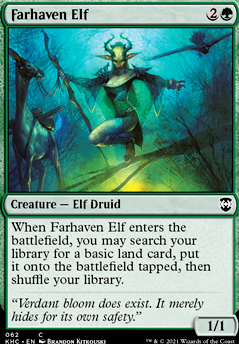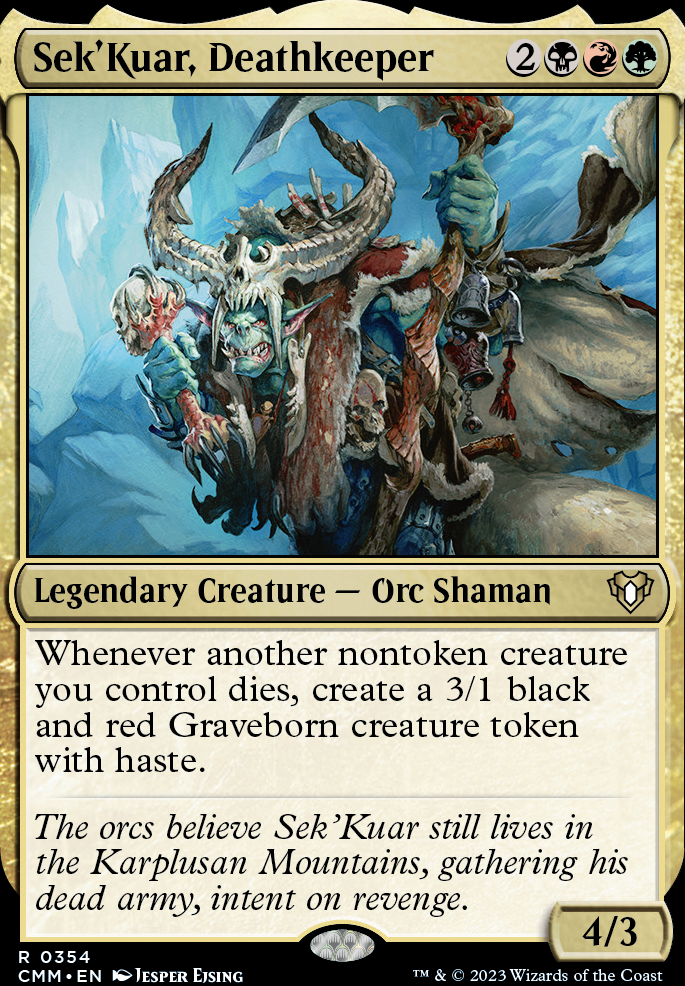Creature (27)
- 1x Blood Artist
- 1x Butcher of Malakir
- 1x Carrion Feeder
- 1x Craterhoof Behemoth
- 1x Deathbringer Thoctar
- 1x Eternal Witness
- 1x Farhaven Elf
- 1x Fleshbag Marauder
- 1x Grim Haruspex
- 1x Joraga Treespeaker
- 1x Merciless Executioner
- 1x Ophiomancer
- 1x Pawn of Ulamog
- 1x Primal Druid
- 1x Ravenous Chupacabra
- 1x Reaper from the Abyss
- 1x Sakura-Tribe Elder
- 1x Savra, Queen of the Golgari
- 1x Shriekmaw
- 1x Smothering Abomination
- 1x Solemn Simulacrum
- 1x Viridian Emissary
- 1x Viscera Seer
- 1x Wood Elves
- 1x Yahenni, Undying Partisan
- 1x Zealous Conscripts
- 1x Zulaport Cutthroat
Enchantment (11)
- 1x Animate Dead
- 1x Awakening Zone
- 1x Deathreap Ritual
- 1x Dictate of Erebos
- 1x Evolutionary Leap
- 1x Fecundity
- 1x Goblin Bombardment
- 1x Grave Pact
- 1x Growing Rites of Itlimoc Flip
- 1x Parallel Lives
- 1x Sylvan Library
Sorcery (4)
Land (2)
Maybeboard
Creature (26)
- 1x Acidic Slime
- 1x Catacomb Sifter
- 1x Caustic Caterpillar
- 1x Dire Fleet Daredevil
- 1x Disciple of Bolas
- 1x Dualcaster Mage
- 1x Elvish Visionary
- 1x Falkenrath Noble
- 1x Harvester of Souls
- 1x Manglehorn
- 1x Massacre Wurm
- 1x Mazirek, Kraul Death Priest
- 1x Meren of Clan Nel Toth
- 1x Molten Primordial
- 1x Murderous Redcap
- 1x Oracle of Mul Daya
- 1x Pitiless Plunderer
- 1x Puppeteer Clique
- 1x Purphoros, God of the Forge
- 1x Razaketh, the Foulblooded
- 1x Sadistic Hypnotist
- 1x Sepulchral Primordial
- 1x Sidisi, Undead Vizier
- 1x Thallid Omnivore
- 1x Treasure Keeper
- 1x Woodfall Primus
Enchantment (5)
- 1x Attrition
- 1x Beastmaster Ascension
- 1x Elemental Bond
- 1x Golgari Germination
- 1x Journey to Eternity Flip
Instant (1)
Land (1)
Artifact (5)
Suggestions
Updates Add
Comments
Attention! Complete Comment Tutorial! This annoying message will go away once you do!
Important! Formatting tips — Comment Tutorial — markdown syntax
Please login to comment
| Date added | 5 years |
| Last updated | 5 years |
| Legality | This deck is not Commander / EDH legal. |
| Rarity (main - side) | 3 - 0 Mythic Rares 21 - 0 Rares 18 - 0 Uncommons 7 - 0 Commons |
| Cards | 49 |
| Avg. CMC | 3.26 |
| Tokens | Eldrazi Spawn 0/1 C, Graveborn 3/1 BR, Morph 2/2 C, Snake 1/1 B |
| Votes | |
| Ignored suggestions | |
| Shared with | |
| Views |


